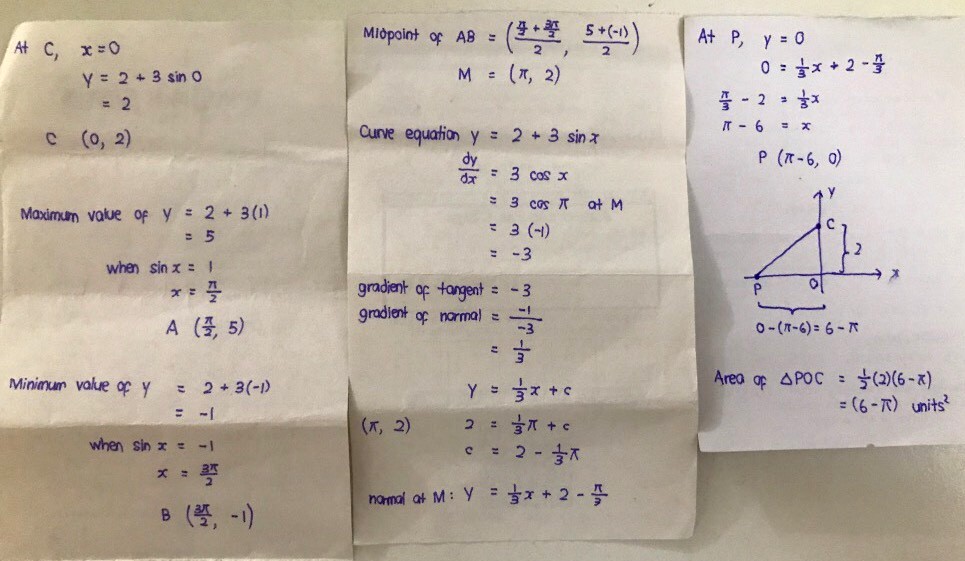 360 Tutoring Program
360 Tutoring Program
*If you qualify, the Free 360 Tutoring Program will be extended to you at no extra charge.
On top of the tutor you are getting, ManyTutors will provide unlimited free tutors to help you with any questions you may have for other subjects. Just snap a photo of your homework, post, and someone will provide the solution for free.
You will get a complimentary premium account on Ask ManyTutors that allows you to ask English, Chinese, Malay, Math, Science, Geography and History homework questions free of charge.
Under the 360 Program, the tutor will receive a different rate from what you are paying to ManyTutors.







For things like y = x sin x, we have to use differentiation
It’s 6 - pi because 6 - pi is positive but pi - 6 is negative (lengths must be positive)
does electrolysis of molten ionic compounds always take place in high temperature to ensure than the ionic compound electrolyte stays in molten state? or can it also take place in rtp?
for electrolysis of molten ionic compounds, will the product of the cation reactions at cathode also be at molten state or it will be at solid state (eg na^+ (l) +e^- = na(s) / na(l))
For the electrolysis of molten compound formed, it depends on the physical state of the resulting metal obtained.
why can o2 burn graphite electrodes at high temperature to form co2 when graphite is an inert electrode that cant react with anything?
Inert simply denotes the fact that something is generally unreactive under regular conditions. It does not mean that it will never react with anything. The extremely high temperature is definitely not a regular condition - it’s an extreme.
At higher levels, you might learn that even group 0 elements like neon and xenon are capable of reacting with other elements.
"some drink cans are made from iron electroplated with aluminium. aluminium is a more reactive metal than iron. if the aluminium coating is scratched, would you expect the iron layer to rust? explain your answer"
why is the answer no when the aluminium coating is already scratched off? if the coating is scratched off, this means that there will not be any coating left and the iron will be exposed to the air to rust
We assume the scratch is not a significant one.